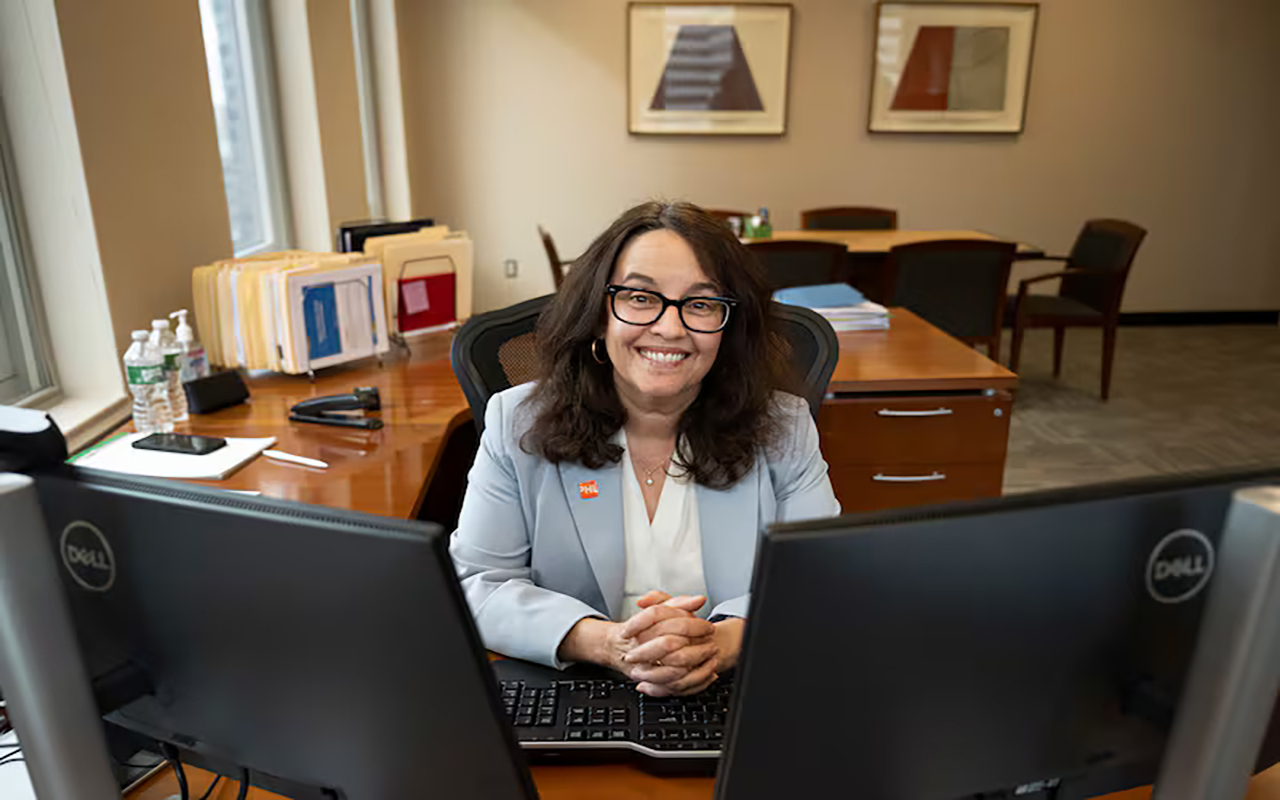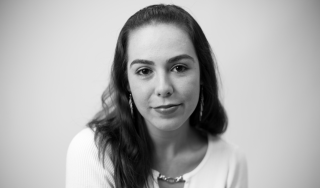
The State of Women and Girls in Philadelphia
Philadelphia is not only the City of Brotherly Love, it is also the City of Sisterly Effectiveness. The City now joins thirty-one other major American cities…
On June 23rd 2016, twenty-seven members were approved and appointed to the permanent and newly-minted “Philadelphia Commission for Women”, joining the progressive trends of other major American cities (New York, Boston, Los Angeles, Phoenix, Denver, Atlanta, Seattle, and San Francisco among them), to create a space in City Government specifically dedicated to the welfare of women, particularly for those women who are marginalized or in challenging situations, i.e. women of color, trans women, and women with disabilities. In their first year alone, the PCW tackled the topics of human trafficking, domestic violence, pay equity, and discrimination, hoping to spur awareness and generating effective solutions to make the City’s women and girls thrive. The Commission hosted a myriad of events, such as “Women in Red and Blue”, “Women’s Equality Day”, staged a “Read-In” to support the Stanford student who was raped by Brock Allen Turner, spearheaded a forum called “From Bangladesh to City Hall”, and voiced their public testimonies on important country-wide and city-wide legislation.
But today, to mark the ending of this buoyant beginning year and the start of another, the PFW released a robust forty-page report, entitled “The State of Women and Girls in Philadelphia”, comprehensively and critically analyzing national and local figures that fall beneath the broader categories of Health and Wellness, Economic Empowerment, Leadership and Civic Engagement, and Education. The aim of the report is to be impactful while remaining positive, outlining achievable goals with measurable probabilities of success.
The report also dedicates a whole section on “the value of an intersectional discourse”, authored by Kimmika L.H. Williams-Witherspoon, Ph.D., the Associate Professor of Theater Studies and Playwriting at Temple University, in order to emphasize that the data collected for the report was used with the framework of intersectionality. Intersectionality, as defined by Kimberle Williams-Crenshaw in 1989, is “the study of simultaneous or layered social identities that are similarly affected by related systems of oppression (i.e. the effects of poverty, gender discrimination, institutional racism, structural oppression, patriarchy occupational segregation, and residential segregation)”. Solutions proposed throughout the report, as well as breakdowns of what the figures represent, all take intersectionality into consideration, providing social-cultural contextualization, rather than a detrimental generalized conflation.
Unfortunately, the lives and schedules we lead as women who work, women who raise children, women who are caregivers, women who are breadwinners, women who lead, women who want to climb the ladder, women who do most or all of domestic chores, or children who will one day grow-up and become women, do not give us sufficient break-time to read about the issues that significantly affect us in our very own zip-codes. Therefore, I have taken the most perplexing numbers from each subsection of the report, and have provided them below. Most statements are directly cited from “The State of Women and Girls in Philadelphia”, which can be accessed on The City of Philadelphia’s website.
Philadelphia has the highest poverty rate (26 percent) among the ten largest cities in The United States.
If you were born in zip code 19106, you can expect to live to be 88 years old. But if your zip code happens to be 19152, your life expectancy is only 68 years old.
Your zip code determines the risk indicators associated with lead exposure, low birth weight, inadequate prenatal care, and teen pregnancy.
12.5 percent of adults in Philadelphia ages 18-64 are uninsured. The highest numbers of uninsured adults are in Upper North Philadelphia, Southwest Philadelphia, and West Philadelphia. Center City has the highest number of insured adults.
Philadelphia’s infant mortality rate of 9 per 1,000 live births is the highest in the nation. African Americans’ infant mortality rate is 13 per 1,000 live births.
The United States’ average infant mortality rate is six deaths to 1,000 live births, which is the largest infant mortality rate in any developed nation.
The City of Philadelphia only has six maternity wards.
Black and Hispanic women (16.4 percent and 15 percent, respectively) sought late or no prenatal care at a rate twice that of White women (8.8 percent).
The implementation of paid parental leave is associated with an infant mortality rate reduction ranging from 2.5 to 13 percent. Pennsylvania does not have paid parental leave, and only five U.S. states have enacted laws for paid parental leave (our neighbors New Jersey and New York are among them).
In Philadelphia, 10.7 percent of all babies are born with a low birth weight. Hispanics are at 8.9 percent, while African Americans are at 13.5 percent, and Asians are at 7.9 percent. White babies are at 7.2 percent.
An estimated 2,000 annual visits to Philadelphia emergency rooms are attributed to women who were assaulted by a spouse, an ex-spouse, boyfriend, or an ex-boyfriend.
In Philadelphia, 14 percent of 9th to 12th graders considered suicide in 2015, most being girls 10 to 14 years old.
21.9 percent of women in Southeastern Pennsylvania 18 or older have not had a breast exam in the past two years, and 21.4 percent of women 40 years of age or older have not had a mammogram.
Smoking among women in Philadelphia has decreased from 2000 to 2015 by almost 5%.
Women who leave the workforce to provide care may experience a lifetime loss of income and benefits ranging from $324,044.
Although women comprise over half of the City’s population, they own less than 40 percent of businesses.
African Americans make up 44 percent of the population, yet they only own 25 percent of businesses. Hispanics or Latinos make up 14 percent of the population, but only own a little over 10 percent of businesses. Asians represent 7 percent of the population, but make up 10 percent of Philadelphia’s business owners.
38 percent of Philadelphia’s jobs are credited to educators and to medical professionals. In the City, women outpace men, comprising 57.5 percent of the jobs in this sector.
Women earn $29,816 compared to men earning $35,599 in Philadelphia.
On average, women start their business with half as much capital as men ($75,000 vs. $135,000).
In 2015, Philadelphia came in first for gender diversity in the technology industry with women making up 30.8 percent of the workforce, ranking ahead of Washington DC, New York, NY, and San Francisco, CA. However, in 2016, Philadelphia dropped to 10th place, with women only making up 28.4 percent of the tech workforce. According to a recent McKinsey study, increasing gender parity in the workplace could add as much as $4.3 trillion to the country’s economy by 2025. Pennsylvania alone could add over 8.59 percent to the state GDP.
Philadelphia is home to the largest and most active chapter of GDI (Girl Develop It).
Dreamit, based in Philadelphia, launched Athena in 2015, the first accelerator focused on developing female-founded tech startups.
In Philadelphia, women are paid 79 cents for every dollar paid to men (white, non-Hispanic), amounting to an annual wage-gap of $10,507.
In Philadelphia, African-American women are paid 68 cents for every dollar paid to men, Latinas are paid 56 cents for every dollar paid to men, and Asian women are paid 81 cents for every dollar paid to men.
38 percent of the total wage gap is the result of illegal discrimination.
The Institute for Women’s Policy (IWPR) estimated that “If women’s work was valued the same as men’s, and if women were to receive the same hourly pay as men with the same levels of education and experience, women’s poverty would be cut in half.”
RELATED CONTENT
If this wage gap were eliminated in Pennsylvania, women would have enough money for:
80 more weeks of food
Eight more months of mortgage and utility payments
More than 12 months of additional rent
In Philadelphia, of 844 seats, only 120 went to women.
Of the nation’s Fortune 500 companies, women of color only held 3.1 percent of board seats.
Women represent 35 percent of City Council, and 31 percent of the Philadelphia Delegation to the State Legislature.
In Philadelphia, only 22 out of 69 ward leaders are women.
52 percent of the City’s cultural nonprofits are run by women.
30 percent of the largest cultural institutions, including the Philadelphia Museum of Art, the Kimmel Center, and Moore College of Art and Design, are headed by women executives.
For every $1.00 spent on pre-k, $1.79 is generated for the local economy.
A shortage of about 7,000 high-quality child care centers was found across Philadelphia. The most crucial areas are Center City, the far Northeast, Strawberry Mansion, the River Wards in North Philadelphia, and Southwest Philadelphia.
In June of 2016, City Council passed a sweetened beverage tax to fund 2,000 quality pre-k slots in Philadelphia, with an expanding number of seats through the following years. The funding generated is expected to cover 6,500 pre-k seats by 2020.
“Women represent 80 percent of the nation’s teachers, 50 percent of the nation’s workforce, and 24 percent of the STEM workforce. Simply put, without women, there is no STEM future” - Jamie M. Bracey, Ph.D.
Special thanks to those who comprise the Philadelphia Commission for Women, work for the PCW, or contributed to this report. They are as follows:
Ajeenah Amir, Anjali Chainani, Yuan Huang, Nandi O’Connor, Steve Preston, Krishna Rami, Tammy Mullin, Allyson Batista, Myciah Brown, Robin Coleman, Maliya Lanier, Aamia Malik, Charles Williamson, Jovida Hill, Felicia L. Harris, Kathleen Padilla, Dawn Chavous, Mable Bakali, Karen Bojar, Ph. D., Morgan Cephas, Tara Chupka, Esq., Vanessa Fields, Marleny Franko, MD., Lisa Holgash, Maggie Holroyd, Roxanne Horrell, Esq., Farzana Rashid Hossain, MD, Lois (Soon Chun) Kang, Noelle L. Marconi, Danielle McDermond, Denise McGregor Armbrister, Rachel J. Pritzker, Esq., Betzaida Rosario, Jennifer M. Slavic, Shelley Sylva, Esq., Julia Terry, Anne Wakabayashi, Tiphanie White, Leigh N. Whittaker, Esq., Tonie Willis, Kimmikah L.H. Williams-Witherspoon, Ph.D., Emma Tramble, M.A., Nina Ahmad, Ph.D., Archna Sahay, Claudia F. Curry, Ed.D., Gabrielle Lantieri, M.S., and Jamie M. Bracey, Ph.D.











LEAVE A COMMENT: